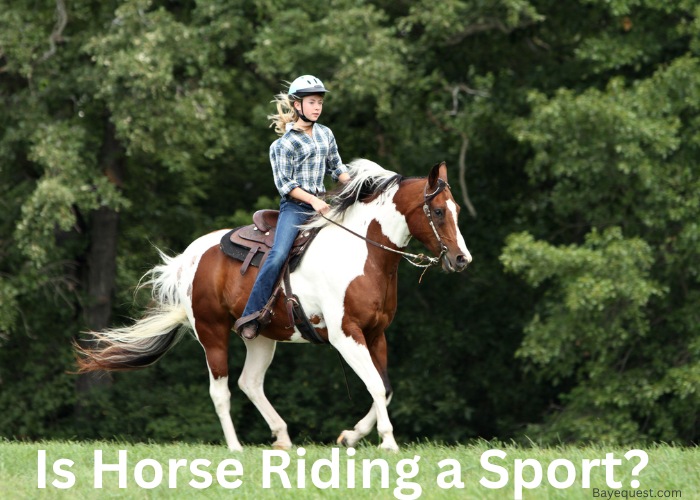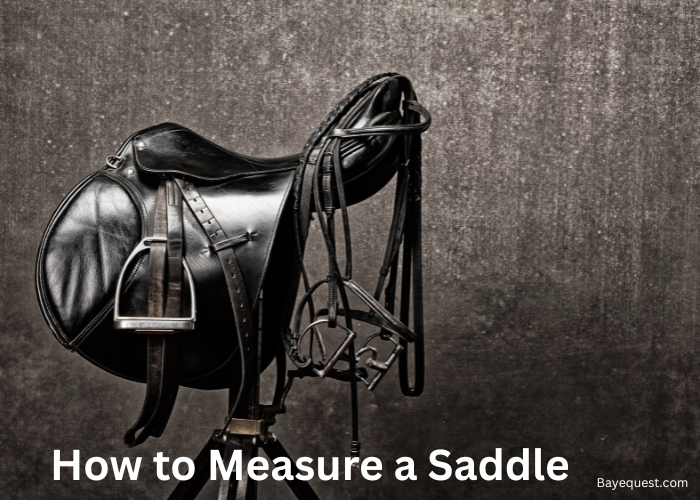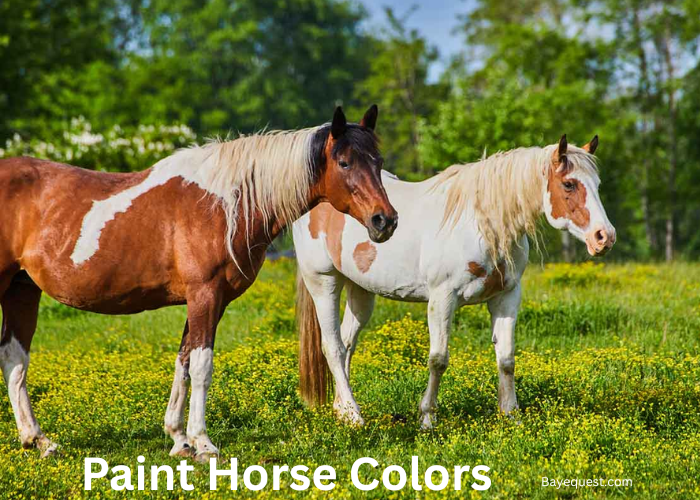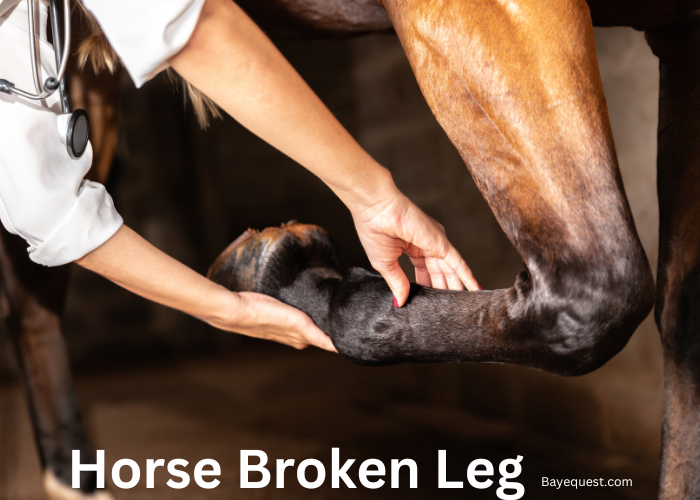Is horseback riding a sport or just a graceful pastime?
Riders and their horses move as one, navigating obstacles and performing with precision and elegance.
It demands strength, skill, and an unbreakable bond between rider and horse.
Training is intense, with both working tirelessly to achieve peak performance.
From rugged trails to prestigious arenas, we explore the world of horse riding to uncover if it truly belongs in the realm of sports.
Hold on tight; this journey promises excitement and insight.
Is Horse Riding a Sport? Key Takeaway
Yes, horse riding is a sport. It demands physical effort, precision, and exceptional skill. Riders must have strength, balance, and coordination, while horses undergo intense training to excel. Competitions such as show jumping, dressage, and eventing push both rider and horse to perform at their peak.
What is a Sport?
A sport is any activity that involves physical exertion, skill, and competition.
It usually has defined rules and regulations, often aiming to achieve specific goals or outperform opponents.
Sports can be individual or team-based. They also require training, practice, and dedication.
Whether it’s soccer, archery, or marathon running, sports challenge the body and mind. It fosters discipline, teamwork, and a competitive spirit.
Why is Horseback Riding a Sport?
Horse riding combines physical exertion, skill, and competition, making it a true sport. Here’s how it fits each criterion:
Competition
Horse riding involves various competitive disciplines. Events like dressage, show jumping, and eventing are common.
Riders and horses compete at local, national, and international levels. The Olympic Games feature equestrian events.
Competitions test precision, speed, and harmony between rider and horse. Winning requires extensive practice and dedication.
Competitions provide goals for riders to strive toward. They foster a sense of achievement and recognition.
This competitive aspect underscores horse riding’s status as a sport.
Athleticism
Horse riding demands significant physical fitness. Riders need strong core muscles to maintain balance.
Leg strength is crucial for gripping the saddle and controlling the horse. Arm strength is necessary for handling the reins.
Cardiovascular fitness helps with stamina during long rides. Riders train like athletes, often cross-training to improve overall fitness.
Horses also require conditioning to perform at their best. The physical demands on both horse and rider are substantial.
This athleticism is a key element in defining horse riding as a sport.
Skills and training
Riders must master a range of skills. This includes balance, coordination, and timing. Training involves hours of practice to perfect techniques.
Dressage requires precise movements and control. Show jumping demands accurate timing and agility.
Eventing combines multiple skills, including endurance. Riders often work with trainers to improve.
Horses also undergo extensive training. They learn to respond to subtle cues from the rider. This high level of skill and training highlights the sport’s complexity.
Mental exercise
Horse riding is mentally challenging. Riders must stay focused and make quick decisions.
They need to understand their horse’s behavior and respond appropriately. Strategy plays a big role in competition.
Riders must plan their approach to obstacles and courses. Mental discipline is key to maintaining composure under pressure.
The bond between horse and rider involves deep communication. This mental aspect enriches the sport, requiring more than just physical prowess.
Physical exertion
Riding a horse is physically demanding. Maintaining balance engages the core muscles.
Controlling the horse requires leg and arm strength. Riding at different gaits involves varying levels of exertion.
Trotting and cantering are more intense than walking. Jumping adds another layer of physical effort.
Riders often feel the effects of a hard ride the next day. This physical exertion aligns horse riding with other athletic sports.
Judging and scoring
Horse riding competitions are judged and scored. In dressage, judges score based on precision and form.
Show jumping is scored by timing and faults like knocked-down poles. Eventing combines scores from different phases.
Judging is based on established criteria and standards. Riders and horses are evaluated against these benchmarks.
Scores determine winners and rankings. This formal judging system is essential in any sport.
Rules and regulations
Horse riding has strict rules and regulations. These rules ensure fair play and safety.
Different disciplines have specific guidelines. Dressage has detailed rules about movements and attire.
Show jumping rules cover course design and penalties. Eventing rules combine aspects of both. Organizations like the FEI govern international competitions.
Rules are in place to protect both horse and rider. Adhering to these regulations is part of the sport.
Is Horseback Riding an Individual or Team Sport?
Horseback riding can be both an individual and a team sport.
In individual disciplines like dressage, show jumping, and eventing, the rider and horse work together as a single unit.
Each rider is judged on their performance, precision, and harmony with their horse.
However, horseback riding also includes team competitions.
For example, in events like team show jumping, multiple riders from the same team contribute to the overall score, working together to achieve the best-combined results.
Additionally, disciplines such as polo and some endurance riding events involve direct teamwork among riders.
So, horseback riding encompasses both aspects, showcasing versatility and collaboration in the sport.
Read also: How to Get a DUI on a Horse.
Is Horseback Riding a Workout?
Yes, horse riding is a workout. It engages various muscles and provides cardiovascular and strength training benefits. Here’s how:
Engages core muscles
Horse riding requires constant balance, which engages your core muscles.
Maintaining proper posture and staying in sync with the horse’s movements strengthens your abs, obliques, and lower back.
Strengthens legs
Riding a horse involves using your legs to grip the saddle, steer, and control the horse. This activity works your inner thighs, hamstrings, and calves.
Posting trot and other riding techniques particularly target these muscles.
Improves arm strength
Holding the reins and guiding the horse requires arm strength. Riders use their biceps, triceps, and shoulders to maintain control and communicate with the horse.
Cardiovascular workout
Horse riding can also be a cardiovascular workout. Activities like trotting, cantering, and galloping increase your heart rate, improving cardiovascular fitness.
Riding for extended periods can enhance endurance.
Burns calories
Riding a horse burns calories, contributing to weight management.
An hour of moderate horse riding can burn approximately 200-600 calories, depending on the intensity of the activity.
Enhances flexibility and coordination
Horse riding improves flexibility, especially in the hips and legs.
It also enhances coordination as riders must manage their movements while communicating with the horse.
Mental benefits
In addition to physical benefits, horse riding also has mental benefits.
It reduces stress, improves focus, and promotes a sense of well-being. The bond between rider and horse can also boost emotional health.
Read also: Exercises for Horseback Riders.
History of Horse Riding as a Sport
Horse riding has a rich history that dates back to around 3500-3000 BCE. Nomadic tribes in Central Asia were among the first to domesticate horses.
Horses were initially used for transportation and warfare. The Scythians, known for their horseback archery, were early pioneers in riding skills.
Horse racing and chariot racing became popular in ancient Greece and Rome. The Greeks introduced these sports to the Olympic Games around 680 BCE.
Romans also embraced these events, holding grand chariot races in the Circus Maximus. Greek historian Xenophon wrote extensively about horsemanship, influencing training techniques still used today.
Horseback riding evolved into jousting and other mounted competitions during the Middle Ages. Knights trained extensively to perfect their riding and combat skills.
The Renaissance saw the formalization of dressage. The Spanish Riding School in Vienna, established in 1572, became a center for classical horsemanship.
The 17th and 18th centuries popularized carriage driving as a sport among European aristocracy.
Horse riding was included in the modern Olympic Games in 1900. Disciplines like dressage, eventing, and show jumping were featured.
In North America, rodeo events gained popularity in the late 19th and early 20th centuries. Skills in roping, barrel racing, and bronc riding were showcased.
Today, horse riding is a global sport with international competitions like the World Equestrian Games and the FEI World Cup.
See also: Can People Ride Zebras?
Benefits of Horse Riding
Horse riding offers numerous benefits, both physical and mental. Here are some of the key advantages:
Physical Benefits
1. Strength and muscle tone
- Core strength. Maintaining balance on a horse strengthens your core muscles, including your abs and lower back.
- Leg muscles. Riding works your inner thighs, hamstrings, and calves, as you use your legs to grip the saddle and steer the horse.
- Arm strength. Holding the reins and controlling the horse engages your biceps, triceps, and shoulders.
2. Cardiovascular health
- Riding, especially at faster gaits like trotting and cantering, increases your heart rate and improves cardiovascular fitness.
- An hour of moderate riding can be an effective cardiovascular workout.
3. Flexibility and coordination
- Horse riding improves flexibility, particularly in the hips and legs.
- It also enhances coordination, as riders must manage their movements while communicating with the horse.
4. Calorie burning
- Horse riding can burn a significant number of calories, aiding in weight management. Depending on the intensity, you can burn 200-600 calories per hour.
Mental Benefits
1. Stress relief
- Spending time with horses and riding can reduce stress levels and promote relaxation.
- The rhythmic motion of riding and the outdoor environment contribute to a calming effect.
2. Mental focus and discipline
- Horse riding requires concentration and quick decision-making, enhancing mental focus.
- The discipline involved in learning and mastering riding techniques can improve overall mental discipline.
3. Emotional well-being
- Building a bond with a horse can boost emotional health, providing a sense of companionship and trust.
- Riding can increase self-confidence and self-esteem as you develop and refine your skills.
4. Therapeutic benefits
- Equine-assisted therapy is used to help people with physical, emotional, and developmental challenges.
- Riding can improve motor skills, balance, and sensory processing.
Social Benefits
1. Community and friendship
- Joining riding clubs or participating in competitions can help you meet new people and form friendships.
- The horse riding community is supportive, fostering a sense of belonging.
2. Teamwork
- Riding often involves working with instructors, trainers, and other riders, enhancing teamwork and collaboration skills.
Why Horse Back Riding is a Sport? Conclusion
Horse riding is undeniably a sport. It’s got all the elements – competition, athleticism, skill, and more. Riders train like athletes, and horses work just as hard.
Competitions are fierce and exciting. It’s not just a hobby or a leisurely activity; it’s a full-body workout and a mental challenge.
With rules, scoring, and a lot of dedication, horse riding stands tall in sports. Next time you see someone riding a horse, remember they’re not just along for the ride.
They’re athletes in perfect harmony with their powerful partners. Horse riding is a sport, through and through.








